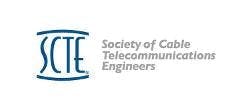ANSI/SCTE 214-1 2015, "MPEG DASH for IP-Based Cable Services Part 1: MPD Constraints and Extensions," is part of a suite documenting usage of MPEG-DASH in IP-based cable networks. It specifies restrictions on MPD and codecs that apply to both MPEG-2 TS and ISO-BMFF segments. Thus, DASH/TS profile is a combination of part 1 (this standard) and Part 2 (which defines aspects specific to MPEG-2 TS), and, analogously, DASH/FF profile is a combination of Part 1 and Part 3 (which defines aspects specific to ISO-BMFF).
ANSI/SCTE 214-2 2015, "MPEG DASH for IP-Based Cable Services Part 2: DASH/TS Profile," defines DASH/TS – a profile of MPEG-DASH that uses MPEG-2 TS segments. In addition, this profile integrates elements of SCTE specifications that define media formats and digital program insertion (DPI). This profile is based on of the philosophy of the DASH MPEG-2 TS Simple Profile and is similar in its approach to the Common ISO-BMFF Profile.
ANSI/SCTE 214-3 2015, "MPEG DASH for IP-Based Cable Services Part 3: DASH/FF Profile," defines a profile of MPEG-DASH based on the ISO BMFF Common Profile. It also defines inband carriage of information typically present in cable systems – such as closed captioning and cue messages – in DASH ISO-BMFF media segments. This profile is a combination of generic restrictions in SCTE 214-1 and restrictions specific to ISO-BMFF specified in this standard.
ANSI/SCTE 215-1 2015, "HEVC Video Constraints for Cable Television Part 1- Coding," defines the coding constraints on ITU-T Rec. H.265 | ISO/IEC 23008-2 video compression (hereafter called "HEVC") for cable TV. In particular, this document describes the coding of a single HEVC coded video elementary stream carried in MPEG-2 transport (ISO/IEC 13818-1) for linear delivery systems supporting ad insertion services. Beyond linear delivery with DPI, signaling is provided for segmentation of content for xDVR applications.
ANSI/SCTE 215-2 2015, "HEVC Video Constraints for Cable Television Part 2- Transport," defines the transport constraints on ITU-T Rec. H.265 | ISO/IEC 23008-2 video compression (hereafter called "HEVC") for cable TV. In particular, this document describes the transmission of a single HEVC coded video elementary stream constrained per SCTE 215-1 over MPEG-2 transport (ISO/IEC 13818-1 for linear delivery systems supporting ad insertion services. Beyond linear delivery with DPI, signaling is provided for segmentation of contents for xDVR applications.
ANSI/SCTE 216 2015, "Adaptive Power System Interface Specification (APSIS)," is part of the work being done in SCTE’s Standards Energy Management Subcommittee (EMS). The APSIS working group under the EMS is responsible for the creation and updates of this document. The document includes contributions by cable operators, vendors and industry support organizations. While the initial intent of the document is to support the cable industry, the process, methodology and results of this effort may be applicable to other telecommunications networks.
The standards are available at http://www.scte.org/SCTE/Standards/Download/SCTE/Standards/Download_SCTE_Standards.aspx?hkey=63914a25-0f85-4d74-8181-c1b642039ad7.
